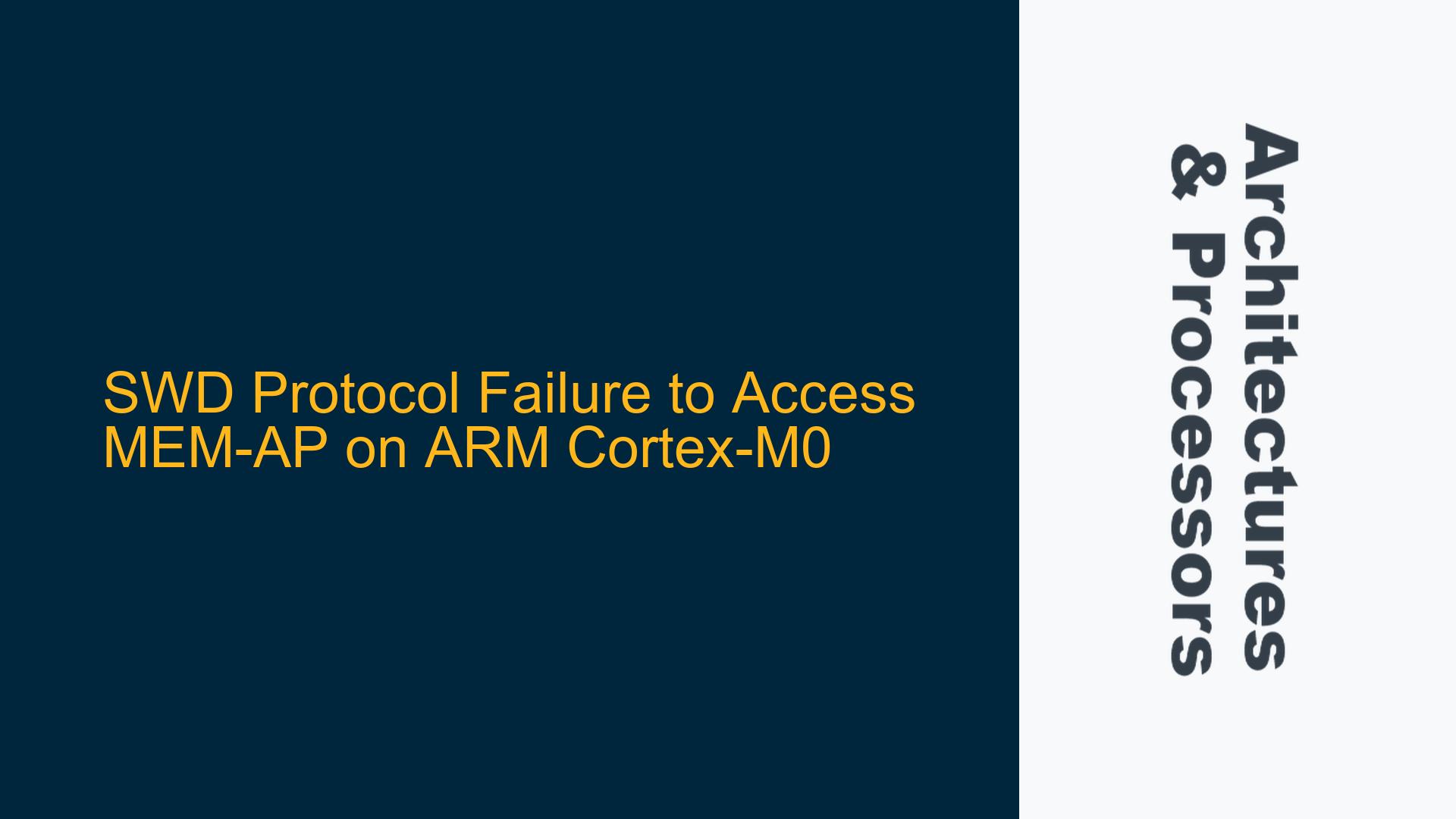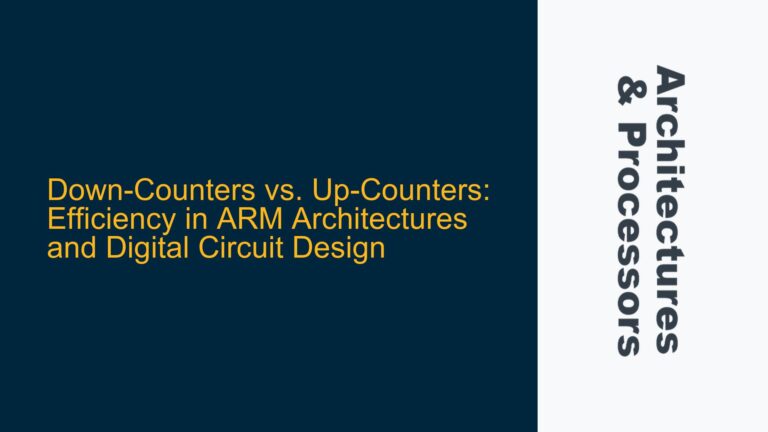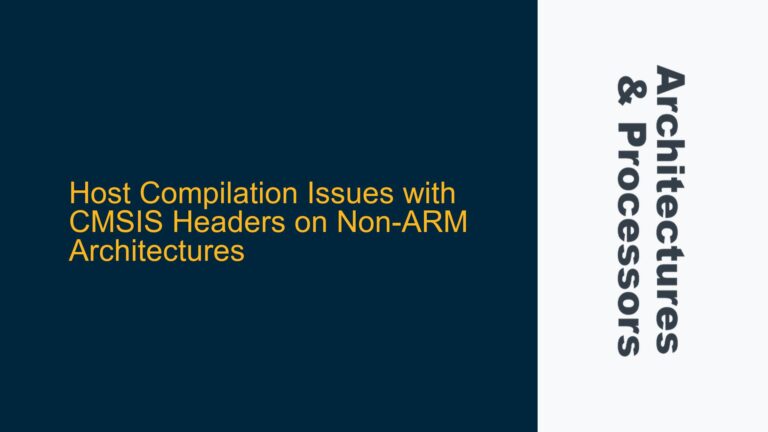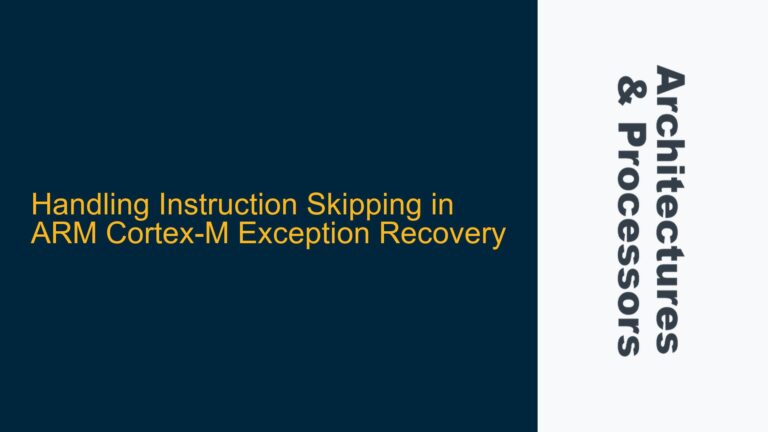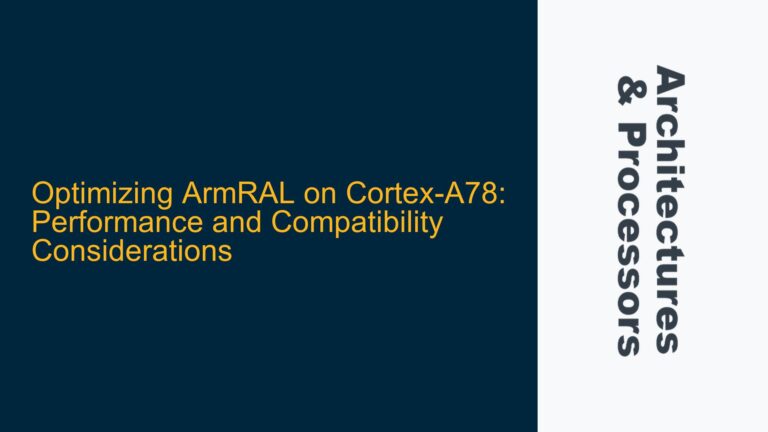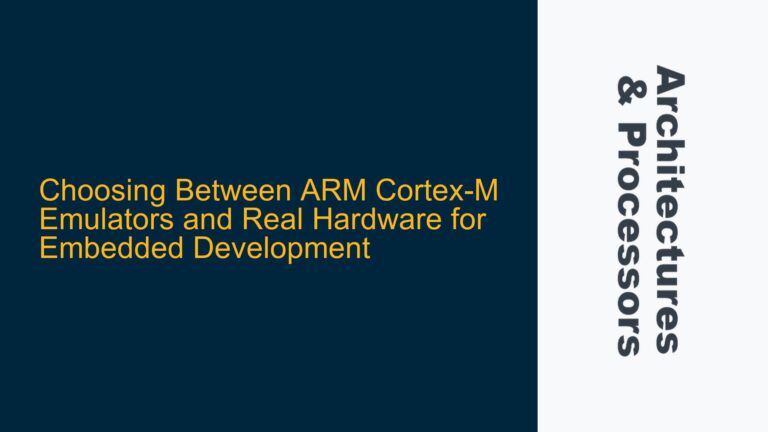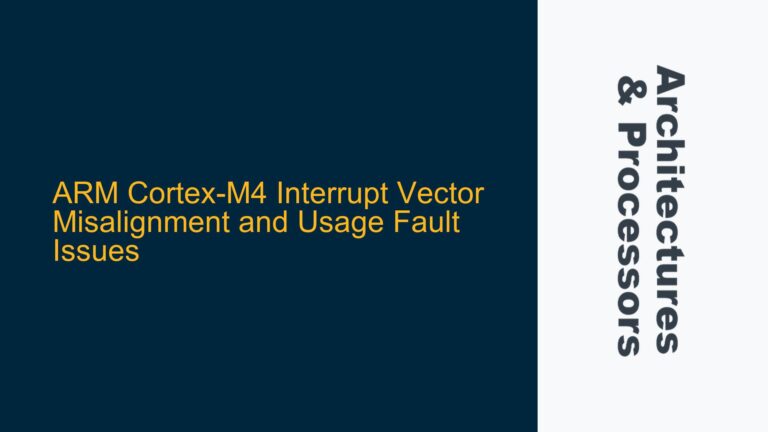SWD Protocol Initialization and IDCODE Read Success but MEM-AP Access Failure
The core issue revolves around the successful initialization of the Serial Wire Debug (SWD) protocol and the ability to read the IDCODE register on an ARM Cortex-M0 processor, but subsequent failure to access the Memory Access Port (MEM-AP). The IDCODE register read operation returns the expected value (0x0BB11477), confirming that the SWD interface is correctly initialized and the Debug Port (DP) is accessible. However, attempts to read the IDR (Identification Register) of the MEM-AP result in an incorrect value (0x00 instead of the expected 0x04770021). This discrepancy indicates a breakdown in communication between the SWD interface and the MEM-AP, preventing further debugging operations such as memory access or register manipulation.
The SWD protocol is a two-wire interface (SWDIO and SWCLK) used for debugging ARM Cortex-M series processors. It is designed to be a low-pin-count alternative to JTAG, offering similar capabilities with fewer pins. The protocol involves a series of handshakes and sequences to initialize the interface, switch from JTAG to SWD mode, and access various debug components such as the DP and MEM-AP. The DP acts as the gateway to the debug infrastructure, while the MEM-AP provides access to the system memory and peripherals.
In this scenario, the SWD protocol is correctly initialized, as evidenced by the successful IDCODE read. However, the failure to read the IDR register of the MEM-AP suggests that the communication between the DP and the MEM-AP is either not established or is being interrupted. This could be due to a variety of reasons, including incorrect configuration of the DP, timing issues, or hardware faults.
Potential Causes: DP Configuration, Timing Issues, and Hardware Faults
The failure to access the MEM-AP after successfully reading the IDCODE register can be attributed to several potential causes. These include incorrect configuration of the Debug Port (DP), timing issues in the SWD protocol, and hardware faults in the target device or the debug probe.
Incorrect DP Configuration
The Debug Port (DP) is responsible for managing the communication between the SWD interface and the MEM-AP. If the DP is not correctly configured, it may fail to establish a connection with the MEM-AP, resulting in the inability to read the IDR register. One common issue is the incorrect setting of the CDBGRSTREQ and CDBGRSTACK bits in the CTRL/STAT register of the DP. These bits are used to control the debug reset request and acknowledge signals. If these bits are not set correctly, the DP may not be able to properly reset or initialize the MEM-AP, leading to communication failures.
Another potential issue is the incorrect configuration of the DP’s power and clock settings. The DP requires a stable power supply and clock signal to function correctly. If the power or clock settings are not properly configured, the DP may not be able to communicate with the MEM-AP, resulting in the inability to read the IDR register.
Timing Issues in the SWD Protocol
Timing is critical in the SWD protocol, as it relies on precise clock cycles to synchronize communication between the debug probe and the target device. If the timing is off, the SWD interface may fail to correctly interpret the commands and responses, leading to communication failures. One common timing issue is the failure to provide enough clock cycles during the initialization sequence. The SWD protocol requires a minimum of 50 SWCLK cycles with SWDIO high to ensure that both SWD and JTAG are in their reset states. If this sequence is not followed correctly, the SWD interface may not be properly initialized, leading to communication failures.
Another timing issue is the delay between sending the JTAG-to-SWD select sequence and performing the READID operation. The SWD protocol requires a minimum of 50 SWCLK cycles with SWDIO high after sending the select sequence to ensure that the SWD interface is properly reset. If this delay is not observed, the SWD interface may not be ready to perform the READID operation, leading to incorrect results.
Hardware Faults in the Target Device or Debug Probe
Hardware faults in the target device or the debug probe can also cause the failure to access the MEM-AP. One common hardware issue is a faulty connection between the debug probe and the target device. If the SWDIO or SWCLK lines are not properly connected, the SWD interface may not be able to communicate with the target device, leading to communication failures.
Another potential hardware issue is a fault in the target device’s debug circuitry. If the DP or MEM-AP is damaged or not functioning correctly, the SWD interface may not be able to access the MEM-AP, resulting in the inability to read the IDR register. Similarly, if the debug probe is faulty, it may not be able to correctly send or receive signals over the SWD interface, leading to communication failures.
Debugging Steps: DP Configuration Verification, Timing Analysis, and Hardware Inspection
To resolve the issue of being unable to access the MEM-AP after successfully reading the IDCODE register, a systematic approach to debugging is required. This involves verifying the DP configuration, analyzing the timing of the SWD protocol, and inspecting the hardware for faults.
DP Configuration Verification
The first step in debugging the issue is to verify the configuration of the Debug Port (DP). This involves checking the settings of the CTRL/STAT register, particularly the CDBGRSTREQ and CDBGRSTACK bits. These bits should be set correctly to ensure that the DP can properly reset and initialize the MEM-AP. Additionally, the power and clock settings of the DP should be checked to ensure that they are stable and within the required specifications.
To verify the DP configuration, the following steps can be taken:
-
Read the CTRL/STAT Register: Read the CTRL/STAT register (address 0x4) of the DP to check the current settings of the CDBGRSTREQ and CDBGRSTACK bits. These bits should be set to 1 to indicate that the debug reset request and acknowledge signals are active.
-
Set the CDBGRSTREQ and CDBGRSTACK Bits: If the CDBGRSTREQ and CDBGRSTACK bits are not set correctly, write to the CTRL/STAT register to set these bits to 1. This will ensure that the DP can properly reset and initialize the MEM-AP.
-
Check the Power and Clock Settings: Verify that the power supply and clock signal to the DP are stable and within the required specifications. If necessary, adjust the power and clock settings to ensure that the DP is functioning correctly.
Timing Analysis of the SWD Protocol
The next step in debugging the issue is to analyze the timing of the SWD protocol. This involves ensuring that the initialization sequence and the delay between sending the JTAG-to-SWD select sequence and performing the READID operation are correctly observed.
To analyze the timing of the SWD protocol, the following steps can be taken:
-
Verify the Initialization Sequence: Ensure that the initialization sequence is correctly followed. This involves sending more than 50 SWCLK cycles with SWDIO high to ensure that both SWD and JTAG are in their reset states. If this sequence is not followed correctly, the SWD interface may not be properly initialized, leading to communication failures.
-
Check the JTAG-to-SWD Select Sequence: Verify that the JTAG-to-SWD select sequence is correctly sent on the SWDIO line. This sequence should be 16 bits long and correspond to the value 0x79E7. If this sequence is not sent correctly, the SWD interface may not switch to SWD mode, leading to communication failures.
-
Verify the Delay After the Select Sequence: Ensure that there is a delay of more than 50 SWCLK cycles with SWDIO high after sending the JTAG-to-SWD select sequence. This delay is necessary to ensure that the SWD interface is properly reset and ready to perform the READID operation. If this delay is not observed, the SWD interface may not be ready to perform the READID operation, leading to incorrect results.
Hardware Inspection
The final step in debugging the issue is to inspect the hardware for faults. This involves checking the connections between the debug probe and the target device, as well as inspecting the target device’s debug circuitry for faults.
To inspect the hardware, the following steps can be taken:
-
Check the SWDIO and SWCLK Connections: Verify that the SWDIO and SWCLK lines are properly connected between the debug probe and the target device. If the connections are loose or faulty, the SWD interface may not be able to communicate with the target device, leading to communication failures.
-
Inspect the Target Device’s Debug Circuitry: Inspect the target device’s debug circuitry, particularly the DP and MEM-AP, for any signs of damage or malfunction. If the DP or MEM-AP is damaged or not functioning correctly, the SWD interface may not be able to access the MEM-AP, resulting in the inability to read the IDR register.
-
Test with a Different Debug Probe: If possible, test the target device with a different debug probe to rule out the possibility of a faulty debug probe. If the issue persists with a different debug probe, the problem is likely with the target device’s debug circuitry. If the issue is resolved with a different debug probe, the original debug probe may be faulty and should be replaced.
Conclusion
The failure to access the MEM-AP after successfully reading the IDCODE register on an ARM Cortex-M0 processor can be attributed to several potential causes, including incorrect DP configuration, timing issues in the SWD protocol, and hardware faults. By systematically verifying the DP configuration, analyzing the timing of the SWD protocol, and inspecting the hardware for faults, the issue can be resolved, allowing for successful access to the MEM-AP and further debugging operations.
